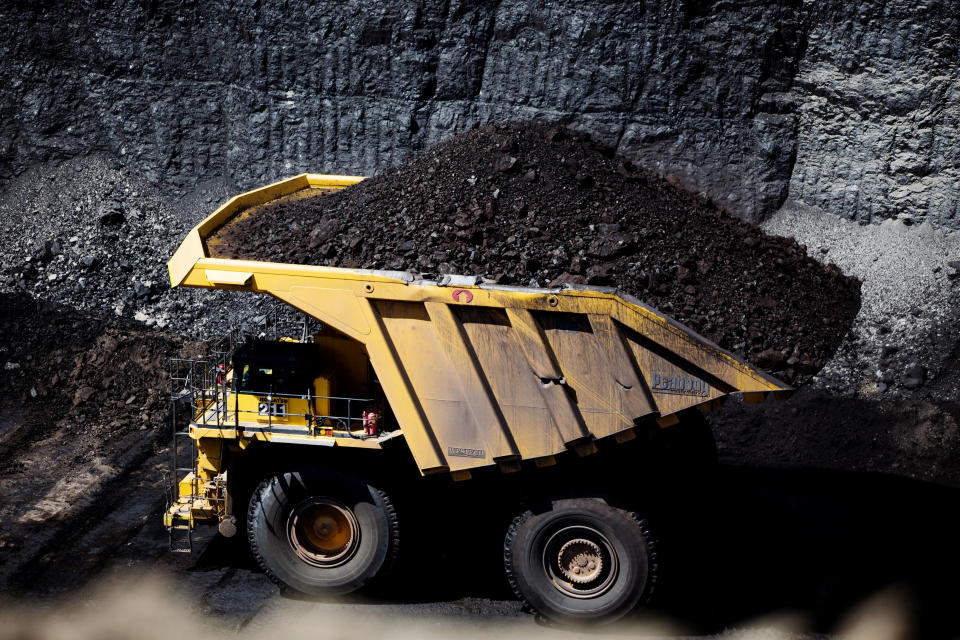Green energy has a bright future — even without Trump
President Donald Trump is trying to revive the coal industry and extend the lifespan of the oil business. But renewables like solar and wind power are still likely to thrive.
By withdrawing the United States from the 2015 Paris climate accord, Trump has made the United States the only advanced economy that lacks a commitment to curb carbon emissions caused by the burning of fossil fuels. But many energy analysts think coal is doomed anyway, because businesses and governments are shifting rapidly toward cleaner-burning fuels that are coming down in price. Oil has a longer shelf life, due to its use as a transportation fuel, but will still most likely decline as alternatives like battery-powered electric vehicles become cheaper and more efficient.
While most of the press attention focuses on energy policies formed in Washington and other capitals, an arguably more important shift has been going on among investors who think renewable energy sources—especially solar and wind—are now viable investments likely to pay respectable returns.
“The consensus among asset managers is that prices are coming down and this is a technology play,” says Matthew Weatherley-White, managing director of investing firm the Caprock Group. “There’s a lot of smart money here.”

That distinction as a technology play is important, especially with regard to solar. That means cost is likely to decline indefinitely as usage increases, the same pattern consumers have gotten used to from microprocessors that get smaller, faster and better, even as the price drops. The famed “Moore’s Law”—the doubling of processing power roughly every 18 months—doesn’t necessarily apply to energy technology, but the general principle does. As the technology catches on, scale ratchets up, prices come down and capability improves.
[Read more: Trump isn’t so good for business, after all]
Battery technology, which is essential for electric vehicles, is also improving, though perhaps at a slower pace than solar panels. Wind power follows a different paradigm, with larger blades being more efficient, but also more expensive. Yet all of these technologies have scaling advantages over commodities such as oil and coal, which by definition become more scarce, and more expensive, as consumption reduces supply. Fracking has changed the equation for oil, to some extent, because it has increased supply. But there’s still a cost to pulling it out of the ground.
The development of renewable energy has been subsidized by governments in the United States and other countries, and even by state and local policies, such as tax credits for electric vehicles and access to high-occupancy lanes for anybody with a car that meets stringent emission standards. And there are two important tax breaks Congress passed in 2015 that Trump doesn’t seem so bothered by—one for solar, and one for wind and other renewables. Before 2015, Congress had traditionally extended those incentives for just one year at a time, leaving investors unsure of their long-term benefit. But the 2015 law put them in place for 5 years, giving investors a stronger incentive to bet on renewables.
“The big spook was that Trump would rescind those credits,” says Weatherley-White. “But he hasn’t even talked about that.”
Government subsidies have undoubtedly helped establish a market for renewables, but costs have now dropped enough that in some instances they’re competitive with the cost of coal or natural gas. And if cost isn’t a factor, government officials and business leaders are much more keen to invest in energy facilities likely to pollute less, since that aligns with public opinion and provides better options if the need to curb emissions grows more acute in the future.

Trump loves to stick up for coal miners, even though solar workers in the United States now outnumber them by more than 2-to-1. In fact, there are now slightly more Americans employed in renewable-energy jobs (about 750,000) than in coal and oil (about 675,000). Natural gas, a cleaner-burning fossil fuel viewed as a bridge between carbon and renewables, accounts for about 400,000 US jobs.
Since 2010, the number of solar-panel installations in the United States has surged by more than 1,600%, according to the Solar Energy Industries Association. At the same time, the average cost of solar energy to consumers has fallen by more than 70%. Wind-power capacity in the United States has doubled since 2010, according to the American Wind Energy Association, with prices falling by nearly the same proportion as solar. Natural gas and coal prices have dropped during the same time frame, though not as dramatically.
By some measures, renewables are now cost-competitive with fossil fuels, a trend that should intensify as renewables become more popular. It’s difficult to directly compare the cost of different types of energy, since there can be big regional variations and costs pop up all along the supply chain, from drilling well to power plant to residential outlet. Solar panels are more effective in some climates than others, for instance, and fossil fuels are usually cheaper when they’re closer to where they’re burned. But the World Economic Forum said recently that most nations will reach “grid parity” within a few years, with renewables matching or undercutting fossil fuels on price. Since that is likely to happen with or without government help, Trump’s fondness for the fuels of the last century won’t hold back the fuels of the next.
Confidential tip line: rickjnewman@yahoo.com
Read more:
Rick Newman is the author of four books, including Rebounders: How Winners Pivot from Setback to Success. Follow him on Twitter: @rickjnewman


